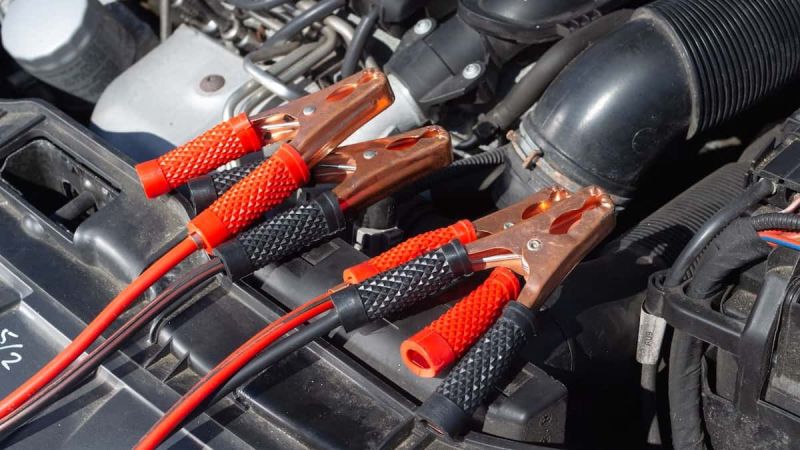“It Must Be a Dead Battery”
Dead battery---what do you do? Too often when someone cannot start their vehicle due to the engine fails to turn over---or turns over weakly---the owner assumes the battery has gone bad and they immediately go to a nearby automotive parts store to pick up a new battery.
The majority of the time this will work. However, it may have been unnecessary and costly because the owner did not take the time to ensure that the problem really did lie with having a battery that went bad. And, it might have been remedied with a simple fix.
More precisely, it’s not always just a “bad battery” that could be the source of the problem. It could also be an alternator-related problem; or, a problem due to a parasitic drain such as a glove box light left on when the box door was ajar.
The following is a summary broken up into two parts of basic and advanced battery maintenance summarized from the popular YouTube automotive channel “ChrisFix.” From it, we will go over the first part of basic car battery maintenance every car owner should know and practice. Plus, we will touch on some caveats that many car owners miss when it comes to testing a battery’s true voltage.
Afterward, you will be encouraged to turn to the video and try out some of the more advanced car battery maintenance techniques from the video that---believe it or not---are among a number of car maintenance projects within the abilities of most car owners.
That said, let’s get started.
Basic Car Battery Maintenance
Step 1: Inspect the battery cable connector-to-post fit---try wiggling the battery cable connectors to the positive and negative posts. If they move slightly, tighten them up because a loose connection could interfere with the flow of electricity from the battery to the starter and be the source of your problem.
Step 2: Inspect the battery posts for corrosion---that bluish green or white gunk on your battery posts can cause a poor or nonexistent connection between the battery posts and the cables. Plus, too much of that gunk can cause leaking of electricity.
Remove the cables from the posts and use a paste-like slurry of baking soda and water with an old toothbrush or small wire brush to clean the surfaces of the posts and the cable connectors. Or, get one of those handy wire battery terminal post brushes to scrape the outside of the posts and the inside of the connectors clean.
Step 3: Test the battery voltage with a multimeter---once you’ve determined that your connections between the battery posts and cables are fine, now is the time to check the voltage of the battery. Simply set the multimeter to DC volts at a setting one click above 12 volts and apply the red test lead to the positive battery post and the black lead to the negative battery post and note the voltage reading.
If the reading is 12.4 to 12.6 volts, then the battery is fully charged. If the reading is significantly lower at 10.5 volts, then you might have a bad cell since with 6 cells---each providing 2.1 volts of power each---a bad cell would cause a reading of roughly 2 volts less than fully charged. While this is a good indication of a bad battery cell, it could just be a coincidence and the fault(s) lie elsewhere. In either case, a second multimeter test is needed if the multimeter shows the battery is not fully charged.
Step 4: A second voltage test with a multimeter and a battery charger---if the battery does have a bad cell, then there is no fixing it---even with a long recharge of the battery using a battery charger. It’s a physical and chemical impossibility.
So to test this, connect a battery charger to your battery posts---red to positive, black to negative---and leave your multimeter on the battery posts as well during the charging. Let the battery recharge for two hours and note the voltage on both the multimeter and the meter on the charger if it has one.
After 2 hours, you might see that the voltage readings on both meter faces show a fully charged battery at 12.2-12.4 volts. However, this can be misleading since power is constantly applied to the battery. To find out if the previous voltage reading was low and hinting at a bad cell, turn off the charger and watch the multimeter reading. If the reading drops rather quickly back to the low voltage reading of 10.5 volts, then it is likely a bad cell problem with the battery. If the battery holds its charge however, then the battery is not likely the problem.
Caveat Warning: However, there are caveats to step 4. Just because after charging the battery and observing a fully-charged indication on your voltmeter, this does not guarantee a healthy battery. In fact, your car’s electrical system could be “holding” a temporary charge causing a false reading. Some automotive sites recommend waiting an hour before retesting your battery with a multimeter so as to get a measure of the battery’s true resting voltage.
But more to the point, you cannot really get an accurate battery voltage reading connecting a voltmeter directly to a battery. For more accuracy, the battery needs to be under an electrical load to test its actual health.
One way to do this is to put a load on the system by turning on the headlights or AC and see what happens on the voltage reading. The voltage should drop by a few tenths, but not much further. Next, turn off the accessories and see what happens to the voltage reading. If it goes back to showing fully charged then your battery is probably good. However, if the voltage reading remains low after shutting off the accessories, then it’s likely a bad battery is your problem.
As a final test, have someone crank the engine while you watch the multimeter. If the voltage reading drops by 1 to 1.5 volts and then returns to fully charged after a brief cranking, then the battery is likely okay. If the reading drops to 8 or 9 volts during cranking, then the battery is likely bad.
A caveat to a caveat---with all of this said and done, there are times when a battery will foil your best testing techniques with a simple multimeter. Sometimes batteries will be at a---for lack of a better explanation beyond this article’s focus---“going bad” stage just temporarily and interfere with your testing. There could be a bad cell plate that is just barely connecting (or shorting) and causing some skitzy results.
A better test is to take an actual battery voltage indicator with a built-in load source to check the health of a battery. In this case, it is preferable to put the multimeter aside and buy a true battery tester and/or go to your local automotive parts store where they will likely test your battery on their equipment for free. I would recommend that they show you what their battery tester shows on its display just to be sure before committing to buying a new battery.
Where To Go From Here
Hopefully by this point you have learned something new or useful and are motivated to learn even more. Here is where I would highly recommend turning to the video below and learn not just some good techniques about how to remove a battery, choose a battery and install a new battery, but also how to diagnose whether your battery problems are due to a faulty alternator, a faulty connection between the battery and the alternator; or, if there is a hidden mystery electrical drain sucking the juice out of your battery over time like a Brahms Stoker character.
Advanced Car Battery Maintenance
How to Test and Replace a Bad Car Battery (COMPLETE Ultimate Guide)
For more about weak or dead battery-related fixes, discover one important simple tool all Tesla owners should carry to revive a dead Tesla.
For more about DIY car maintenance, here are some recommended articles on changing your transmission fluid and why letting a garage rotate your tires for you could result in damaged brakes.
Timothy Boyer is Torque News automotive reporter based in Cincinnati. Experienced with early car restorations, he regularly restores older vehicles with engine modifications for improved performance. Follow Tim on Twitter at @TimBoyerWrites for daily automotive-related news.
Photo by Daniel on Unsplash











